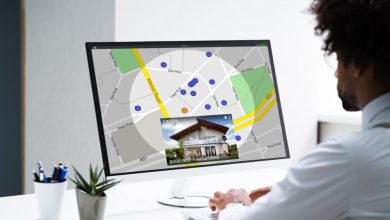Building Relationships with Journalists and Media Outlets; The Comprehensive Guide to Media Public Relations

Media public relations (PR) play a pivotal role in shaping and maintaining a positive public image for individuals, organizations, and brands. Effective media PR not only enhances reputation but also fosters trust, drives engagement, and supports business objectives. This article delves into the multifaceted nature of media public relations, exploring its importance, strategies, challenges, and the evolving landscape.
The Importance of Media Public Relations
Building a Positive Public Image
A well-executed media PR strategy helps build and sustain a positive public image. This image is crucial for gaining public trust, attracting customers, and fostering loyalty. A strong public image also enhances an organization’s credibility and legitimacy, making it easier to navigate challenges and seize opportunities.
Key Benefits of Media PR:
- Trust and Credibility: Positive media coverage builds trust and credibility with the public and stakeholders.
- Brand Awareness: Consistent media presence increases brand visibility and awareness.
- Reputation Management: Media PR helps manage and protect the organization’s reputation during both good and bad times.
- Influence and Authority: Effective media relations position an organization as an industry leader and thought leader.
Understanding Your Target Audience
Tailoring Messages
Knowing your target audience is fundamental to any successful media PR strategy. Tailored messages resonate more deeply with audiences, making them more likely to engage with and support your brand.
Steps to Understand Your Audience:
- Market Research: Conduct thorough research to understand demographic details, preferences, behaviors, and pain points.
- Segmentation: Divide your audience into segments based on shared characteristics for more precise targeting.
- Feedback and Engagement: Regularly seek feedback and engage with your audience to stay updated on their needs and interests.
Utilizing Various Media Channels
Reaching a Wider Audience
To maximize reach and impact, leverage a variety of media channels. Each channel has its unique strengths and can cater to different segments of your audience.
Key Media Channels:
- Social Media: Platforms like Twitter, Facebook, LinkedIn, and Instagram allow for direct and immediate engagement with audiences.
- Press Releases: Official statements distributed to media outlets to announce news, events, or developments.
- Interviews: Opportunities to present your message directly through media interviews, providing a personal touch.
- Blogs and Articles: Writing articles for industry publications or maintaining a company blog to share insights and updates.
Building Relationships with Journalists and Media Outlets
Increasing Positive Coverage
Strong relationships with journalists and media outlets are crucial for securing positive media coverage. These relationships can lead to more opportunities for stories, interviews, and features.
Strategies for Building Relationships:
- Networking: Attend industry events, press conferences, and media briefings to meet journalists.
- Regular Communication: Keep in touch with journalists through emails, calls, and social media.
- Provide Value: Offer exclusive stories, insights, and data that journalists find valuable.
- Respect Their Time: Be mindful of deadlines and the journalist’s schedule.
Crafting Compelling and Newsworthy Stories
Capturing Media Attention
To attract media attention, your stories must be compelling and newsworthy. A strong narrative, supported by facts and human interest elements, is essential.
Elements of a Compelling Story:
- Timeliness: Stories that are current and relevant are more likely to be picked up.
- Impact: Highlight how the story affects the audience or community.
- Novelty: Unique and unusual stories capture more interest.
- Human Interest: Stories that evoke emotions or feature personal experiences.
The Role of Crisis Management in Media Public Relations
Handling Negative Press
Crisis management is a critical aspect of media PR. How an organization handles a crisis can significantly impact its public image.
Crisis Management Strategies:
- Preparation: Have a crisis management plan in place, including key messages and a designated spokesperson.
- Transparency: Be honest and transparent in your communications. Acknowledge the issue and outline steps being taken to address it.
- Timeliness: Respond quickly to mitigate the spread of negative information.
- Follow-Up: Provide regular updates and communicate the resolution of the crisis.
The Impact of Visual Elements
Enhancing Media Relations
Visual elements such as photos, videos, and infographics enhance media relations by making stories more engaging and shareable.
Benefits of Visuals:
- Increased Engagement: Visual content is more likely to be viewed and shared.
- Enhanced Understanding: Visuals help explain complex information more clearly.
- Better Retention: People are more likely to remember visual content.
Importance of Transparency and Authenticity
Building Trust
Transparency and authenticity are vital for building and maintaining trust with both the media and the public.
Practices for Transparency and Authenticity:
- Honest Communication: Always communicate truthfully and avoid misleading information.
- Consistent Messaging: Ensure your messages are consistent across all channels.
- Acknowledging Mistakes: When errors occur, acknowledge them and outline corrective actions.
Measuring the Success of Media Relations
Metrics and Analytics
To evaluate the effectiveness of your media relations efforts, use metrics and analytics to measure performance.
Key Metrics:
- Media Mentions: Track the number and quality of media mentions.
- Website Traffic: Monitor increases in website traffic following media coverage.
- Social Media Engagement: Measure likes, shares, comments, and overall engagement on social media platforms.
- Sentiment Analysis: Analyze the tone and sentiment of media coverage.
The Evolving Landscape of Media Public Relations
Adapting to Digital Platforms and Influencers
The rise of digital platforms and influencers has transformed media PR. Adapting your strategies to leverage these changes is crucial for continued success.
Adapting Strategies:
- Digital Media: Focus on digital PR by engaging with online news outlets, blogs, and social media.
- Influencer Collaborations: Partner with influencers to reach new audiences and add credibility.
- Content Creation: Develop high-quality digital content such as videos, podcasts, and interactive media.
- Real-Time Engagement: Use social media for real-time engagement and to quickly address any issues or feedback.
Conclusion
Media public relations is an essential component of any comprehensive communication strategy. It helps build and maintain a positive public image, enhances brand credibility, and supports business objectives. By understanding your audience, utilizing various media channels, building strong relationships with journalists, crafting compelling stories, and handling crises effectively, you can maximize the impact of your media relations efforts. Incorporating visual elements, maintaining transparency, and measuring success through metrics further enhance your strategy. As the media landscape continues to evolve with digital platforms and influencers, staying adaptable and innovative will ensure your media PR strategies remain effective and relevant.





